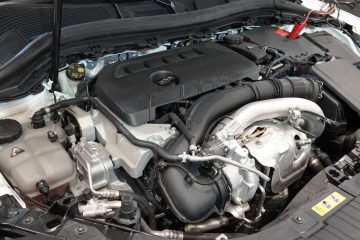Given the rise in electric vehicle (EV) ownership, having a home EV charger is not only a convenience but a necessity. Electric vehicle sales are surging, with sales set to exceed 1 million in 2022 and 1.6 million in 2023, underscoring the growing need for accessible charging solutions.
Installing an electric car charger at home offers added convenience, from cost savings to reduced environmental impact. Use this article to learn about the process of installing an electric car charger that will allow you to charge at home.
Preparing for Installation
When choosing the right charger, you can ask the EV charging manufacturer what types of chargers they offer. A Level 1 charger is standard and provides slower charging speeds, making it suitable for overnight charging. Level 2 chargers offer faster charging options that can significantly increase the range of an electric vehicle in less time. When choosing the ideal charger for your needs, consider features like amplifier capacity, power output, and connector compatibility.
Obtaining the necessary permissions is an important step in the installation process. These permits ensure that your EV charger installation complies with local regulations and safety standards. It is recommended to contact your local authority or town hall to inquire about the specific licenses required in your area. By obtaining the necessary permissions beforehand, you can proceed with the installation process smoothly and legally.
Installation Process
1.Setting Up the Charger Location
When considering the ideal location for your Charger, prioritize areas that offer convenient access and ample space. Optimal locations include near your vehicle parking spot or a dedicated charging area. For Indoor installation, ensure proper ventilation to dissipate heat generated during charging. Conversely, for Outdoor installation, shield the charger from direct sunlight and precipitation to prolong its lifespan.
Ideal locations for installation
- Near your designated parking space
- In a well-ventilated indoor area
- Shielded from direct sunlight and rain if outdoors
Considerations for indoor vs. outdoor installation
- Indoor installations require adequate ventilation
- Outdoor installations need protection from weather elements
2.Electrical Work
Before proceeding with the electrical work, consult a licensed electrician to assess your home’s electrical capacity. When Installing a new service panel, ensure it can accommodate the additional load of an EV charger. For wiring and outlet installation, use high-quality materials to guarantee safety and longevity of the charging system.
Installing a new service panel
- Assess existing electrical capacity with a licensed electrician.
- Upgrade service panel if necessary to support EV charger load.
Wiring and outlet installation
- Use quality wiring materials for durability.
- Install outlets in accessible locations for easy charging access.
3.Mounting the Charger
Mounting your Charger correctly is crucial for safety and efficiency. Follow manufacturer guidelines for secure attachment to walls or mounting posts. Ensure compliance with local regulations to prevent hazards during operation.
Steps to mount the charger
- Identify suitable mounting location based on manufacturer recommendations.
- Securely attach charger using appropriate hardware provided.
Ensuring safety and compliance
- Double-check all connections before powering on the charger.
- Verify compliance with local electrical codes for safe operation.
Post-Installation Tips
1.Testing the Charger
To ensure your Charger functions optimally, conduct regular tests to verify its performance. Begin by checking the power supply and connection stability. Test the charger by plugging in your electric vehicle and monitoring the charging process closely.
Confirm that the Charger is delivering the expected charge rate and that there are no unusual sounds or odors during operation. By routinely testing your Charger, you can identify any issues promptly and address them before they escalate.
2.Scheduling Regular Maintenance
Maintaining your Charger is essential for its longevity and efficiency. Schedule routine maintenance checks with a licensed electrician to inspect the wiring, connections, and overall functionality of the charging system.
Regular maintenance ensures that your Charger operates safely and reliably, minimizing the risk of unexpected malfunctions. By adhering to a maintenance schedule, you can extend the lifespan of your Home EV charger and enjoy uninterrupted charging services.
Conclusion
All in all, the installation process of a home electric car charger involves key steps to ensure efficiency and safety. By choosing the right charger and obtaining the necessary licenses, you can pave the way for a seamless charging experience.
Our final recommendation is to prioritize maintenance inspections with a licensed electrician to ensure optimal performance. Remember, it’s worth seeking professional help for complex tasks like installing a new service panel or hardwiring.
If you need to purchase a single or multiple electric vehicle charging piles. Please click here to consult us and we will provide you with preferential prices.




